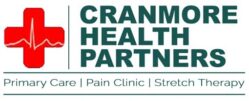Medical Cannabis is Medicine
At present 24 states allow cannabis for medicinal use. There are hundreds of chemical compounds in cannabis that work together to provide therapy for an array of conditions and symptoms. We all have receptors for and produce natural endocannabinoids which help our bodies with internal stability and health. Consumed Cannabinoids help communicate between cells and bind to receptors in the nervous system both in the brain (CB-1 receptors) and the body (CB-2 receptors). Depending on the strain, concentration, and many other factors, cannabis can have both positive and negative effects.

The history of marijuana as recognized medicine 1850 - present
1850
The US pharmacopeia admitted marijuana as a recognized medicine in 1850 under the name of
Extractium Cannabis or Extract of Hemp and listed it until 1942.
1937
In 1937 a federal law was
passed against cannabis, despite the objections of the American Medical Association (AMA) at the time.
1976
In 1976 the federal
government created the investigational New Drug Compassionate Access Research Program to allow patients to receive access to cannabis, paid for by the federal government.
1988
In 1988 the
Chief DEA Administrative Law Judge ruled after extensive hearings that, “Marijuana, in its natural form, is one of the safest therapeutically active substances known.”
1996
In 1996 states began
passing voter initiatives that allowed for legal use with a doctor’s recommendation.
1997
In 1997 the
Office of National Drug Control Policy commissioned the Institute of Medicine (IOM) to conduct
a comprehensive study of cannabis Therapeutics. The IOM concluded that cannabis was a safe
and effective medicine, patients should have access, and the government should expand
avenues for research and drug development.
If you feel that Medical Cannabis is something that you think may benefit your specific situation,
please discuss it with your primary care provider. It is always best to consume products for
medical use from a dispensary so that you are sure it is tested and safe. We always recommend
starting at a low dose and going slow to give time for effects and see if it is helpful. You may
have to trial products to find the best match for your specific condition and your
receptors. You may find a good match that is helpful for you or a loved one. Many people find
great benefits from this modality, and it should be considered as treatment without negative
connotations if a patient is considering it.
Medical Cannabis Patient Certification
Kelly DeFeo CRNA, FNP, PhD has provided Anesthesia and pain management in the North Country for over 24 years. She was appointed to the NH Therapeutic Advisory Council that implemented the Therapeutic Cannabis Program in NH. She owns Cranmore Health Partners and provides Pain Management services to the North Country Community. She currently certifies patients in both NH and ME for Qualifying conditions.

Standalone Medical conditions:
Combination of a Qualifying Dx AND a Qualifying Symptom
Qualifying Conditions include
